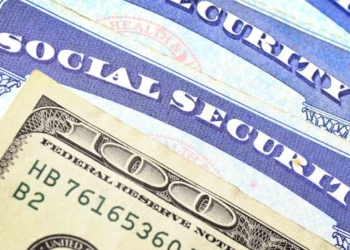The scheduling of payments for the Supplemental Security Income (SSI) program follows a well-established protocol set by the Social Security Administration (SSA), that has been perfectly working for decades as of now. This system occasionally results in two disbursements occurring within a single calendar month, a situation that is often misinterpreted as an “extra” payment.
The reason for this to happen is purely administrative and is dictated by the federal Social Security calendar. When the first day of a month falls on a weekend or an official federal holiday, regulations require that the payment be issued on the last preceding business day.
The change that causes dual SSI payments
This specific set of circumstances is precisely what will happen in August. The scheduled payment for September, which is normally due on the first, must be moved because that date falls on a Sunday. So, the regular SSI payment for August was delivered on the first date, and September’s deposit will arrive on August 29, as September 1 is Labour Day.
Because the September entitlement is paid in August, there will be no SSI payment issued throughout the entire month of September. Recipients must budget the funds from the August 30th payment to cover their expenses for the subsequent five weeks.
The next payment will be the October benefit, which is scheduled to arrive on its regular date, Wednesday, October 1st. Understanding this cycle is essential for effective household budgeting and preventing a financial shortfall in September.
The SSI program has three maximum payments: the first cap is for an individual recipient, that could claim up to $967 per month, if approved by the SSA. furthermore, a couple filing together could be entitled up to $1,450. Finally, there is a category for “essential person”, those who help a recipient when they’re not able to perform their regular day-to-day activities: in such case, it could be approved up to $484.
Quick review on how to be eligible for SSI
The SSI program is specifically there to help Americans who are in a tight spot financially and are also either facing the challenges of a significant disability, are blind, or have reached retirement age. It’s that combination of real medical need and very limited financial means that forms the core of eligibility.
They need to see that your condition makes working extremely difficult, if not impossible, and has lasted—or is expected to last—for a continuous period of at least one year.
On the financial side, it’s not just about the income you might earn from a job. The Social Security Administration takes a broad look at your situation, counting up most forms of cash, checks, or even help you get with things like your rent or bills.
There are also strict limits on what you can own in terms of assets, like money in the bank or a second car, though they wisely don’t count the home you live in or your primary vehicle. You’ll also need to be a U.S. citizen or fall under a specific qualified non-citizen status and be living in the States.
The best move is to just have a friendly chat with someone at the SSA, by calling their call center, visiting their website, or walking into your nearest SSA agency; they can walk you through your specific case and clear up any confusion.







